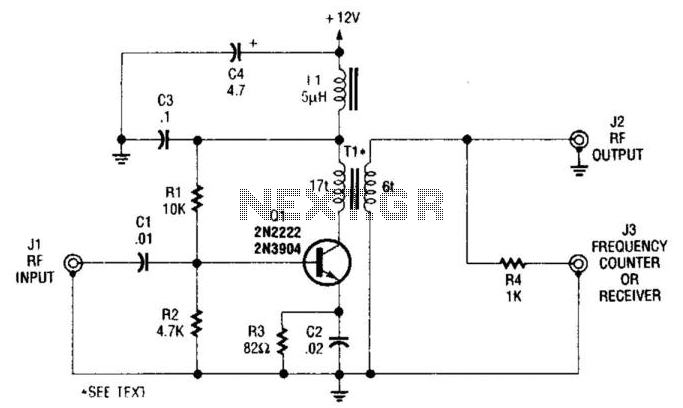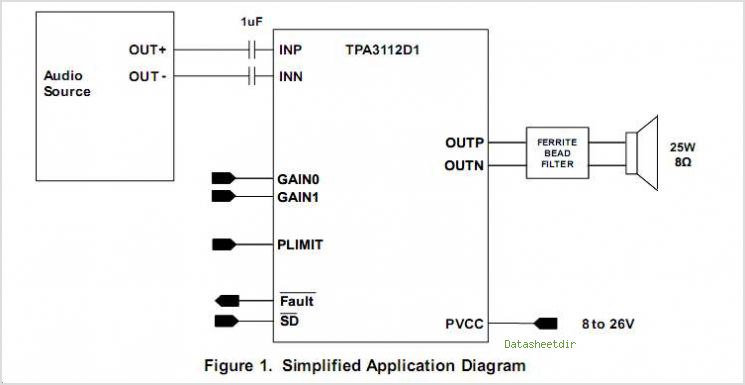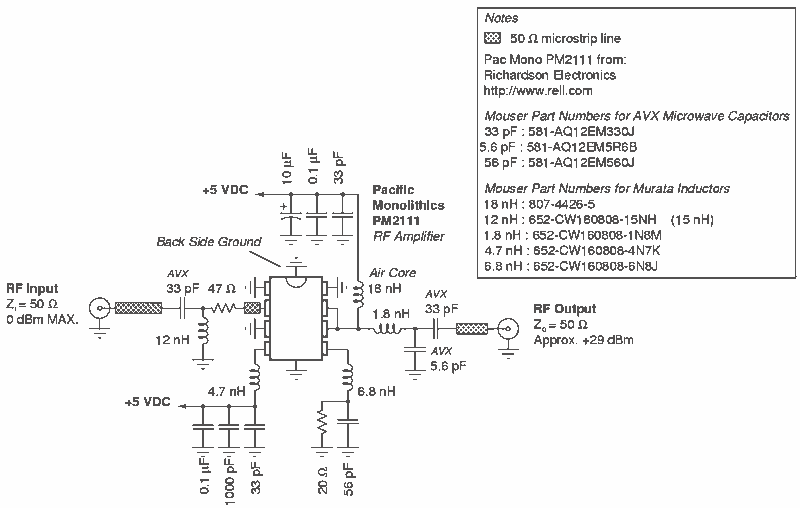
Wideband Test Amplifier

This single-stage amplifier, utilizing a 2N2222 or 2N3904 general-purpose transistor, is designed for interfacing with test instruments. The transformer T1 is an Amidon Associates FT-23-43 core, wound with 17 turns of #26 wire for the primary and 6 turns for the secondary. J3 serves as a lower-level output for monitoring devices, such as a receiver frequency counter or spectrum analyzer.
This single-stage amplifier circuit is an essential component for enhancing signal levels in various testing applications. The choice of transistors, either the 2N2222 or 2N3904, provides flexibility and reliability, as both are widely used in low-power amplification due to their favorable characteristics, including high gain and low noise.
The transformer T1, constructed with an Amidon Associates FT-23-43 core, plays a crucial role in the circuit by providing impedance matching and signal isolation. The primary winding consists of 17 turns of #26 wire, while the secondary winding features 6 turns. This configuration allows for effective voltage transformation, enabling the amplifier to boost the input signal to a level suitable for the output monitoring device.
The output jack J3 is specifically designed for connecting to lower-level monitoring devices, such as a receiver frequency counter or a spectrum analyzer. This output provides a convenient means to observe the amplified signal without introducing significant loading effects on the circuit. The design ensures that the amplifier maintains signal integrity while delivering sufficient output for accurate measurements.
Overall, this single-stage amplifier circuit is a valuable tool for engineers and technicians working with test instruments, offering an efficient solution for signal amplification and monitoring. This single-stage amplifier (using a 2N2222 or 2N3904 general-purpose transistor) is useful for interfacing test in struments. T1 is an Amidon Associates FT-23-43 core wound with 17 and 6 turns of #26 wire. J3 is a lower-level output for a monitoring device (such as a receiver frequency counter or spectrum analyzer).
This single-stage amplifier circuit is an essential component for enhancing signal levels in various testing applications. The choice of transistors, either the 2N2222 or 2N3904, provides flexibility and reliability, as both are widely used in low-power amplification due to their favorable characteristics, including high gain and low noise.
The transformer T1, constructed with an Amidon Associates FT-23-43 core, plays a crucial role in the circuit by providing impedance matching and signal isolation. The primary winding consists of 17 turns of #26 wire, while the secondary winding features 6 turns. This configuration allows for effective voltage transformation, enabling the amplifier to boost the input signal to a level suitable for the output monitoring device.
The output jack J3 is specifically designed for connecting to lower-level monitoring devices, such as a receiver frequency counter or a spectrum analyzer. This output provides a convenient means to observe the amplified signal without introducing significant loading effects on the circuit. The design ensures that the amplifier maintains signal integrity while delivering sufficient output for accurate measurements.
Overall, this single-stage amplifier circuit is a valuable tool for engineers and technicians working with test instruments, offering an efficient solution for signal amplification and monitoring. This single-stage amplifier (using a 2N2222 or 2N3904 general-purpose transistor) is useful for interfacing test in struments. T1 is an Amidon Associates FT-23-43 core wound with 17 and 6 turns of #26 wire. J3 is a lower-level output for a monitoring device (such as a receiver frequency counter or spectrum analyzer).





